9. Run the Test
Configure the request
To use the data from a data source, you need to modify the request test step.
Open the Request 1 step editor and switch to the Request tab. If you created the data source loop earlier, the request will contain the
${Data Source#email}value: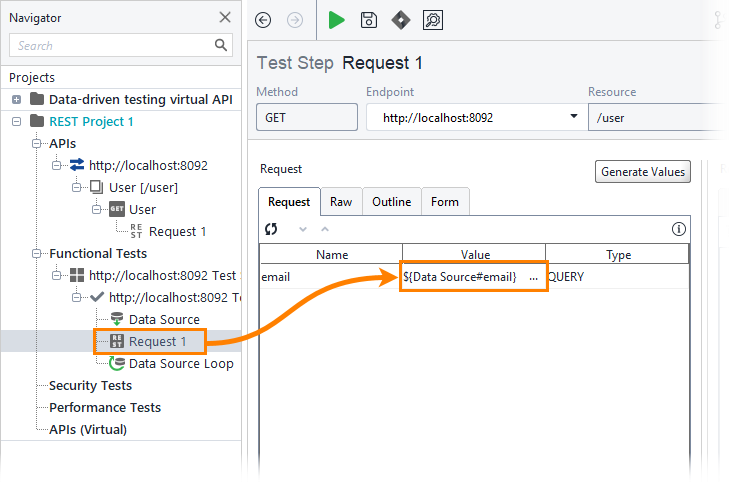
If the
emailparameter has another value, type${Data Source#email}in it or use the Get Data command to select theemailproperty with a special wizard.Click
 on the editor toolbar to run the request.
on the editor toolbar to run the request.You will see the response data on the right:
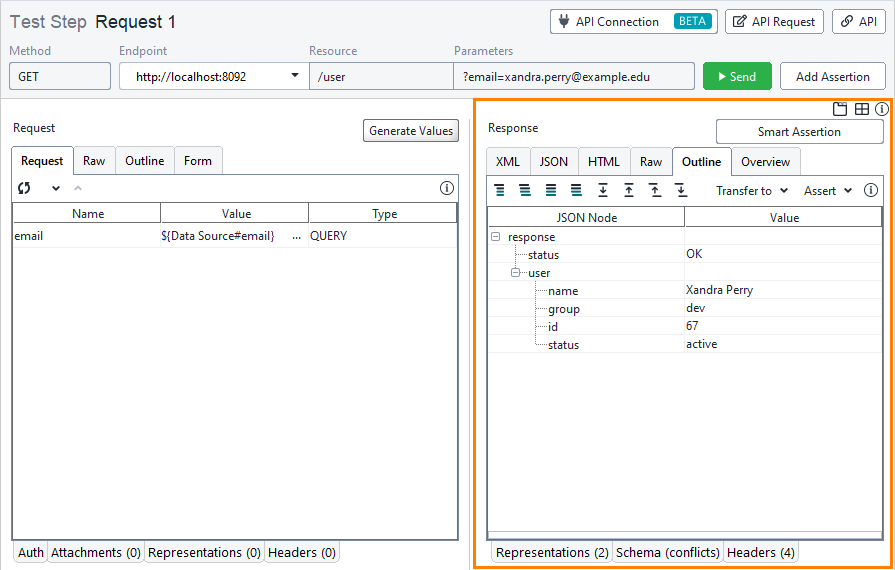
Note
If you did not test the data source on the previous step, the property does not have a value, so the request does not send a valid parameter.
Run the test
Now, you have a test case with a data source, a test step that uses this source, and a data source loop executed during the test run.
Your test case is ready. Click  on the test case toolbar to run the test.
on the test case toolbar to run the test.
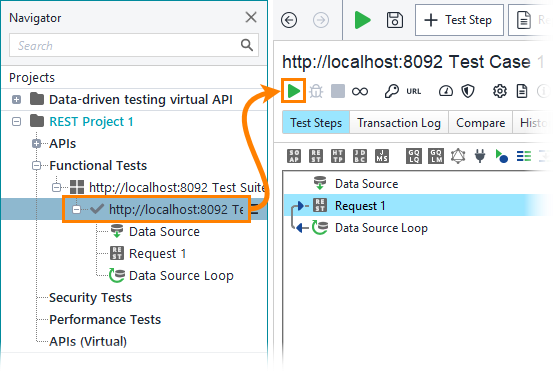
To see the details of the test run, take a look at the Transaction Log. To open the log, click Transaction Log on the test case toolbar.
 |
The Transaction Log shows the following test run details:
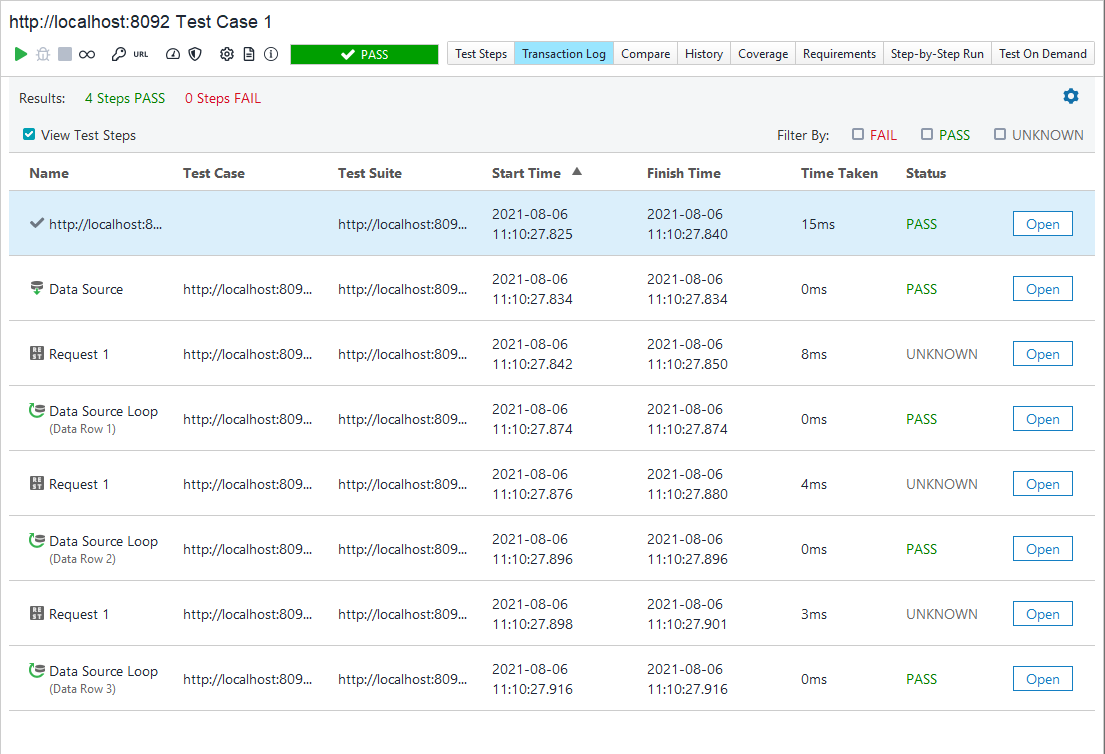 |
Important
You did not use any assertions to validate requests, so the assertion status for the request is UNKNOWN. You can see it in the Status column. The data source and the data source loop are always Passed, since it is impossible to assert them.
To check the response for a particular request made during the run, click Open in the respective row:
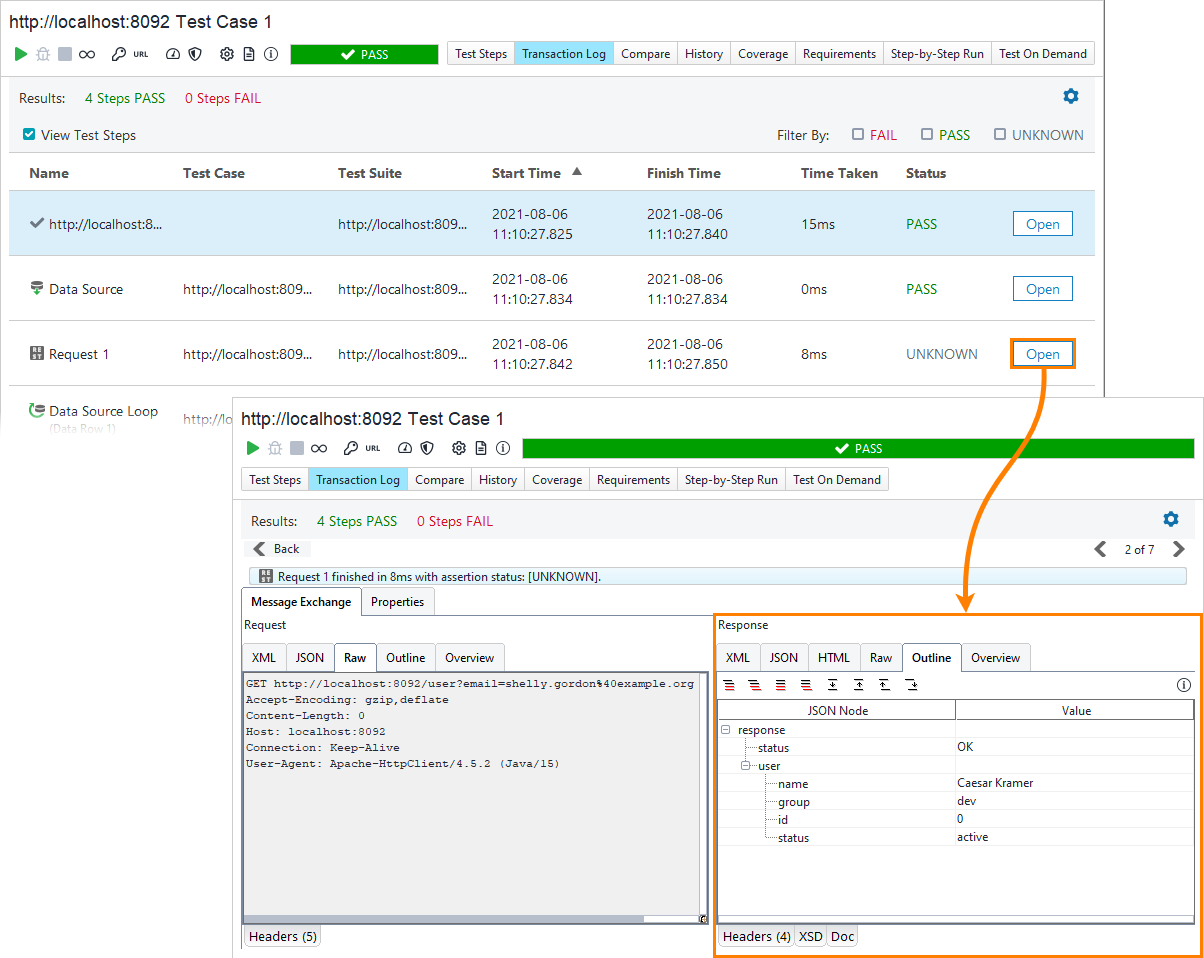 |
Add assertion
Switch to the REST Request and click Smart Assertion:
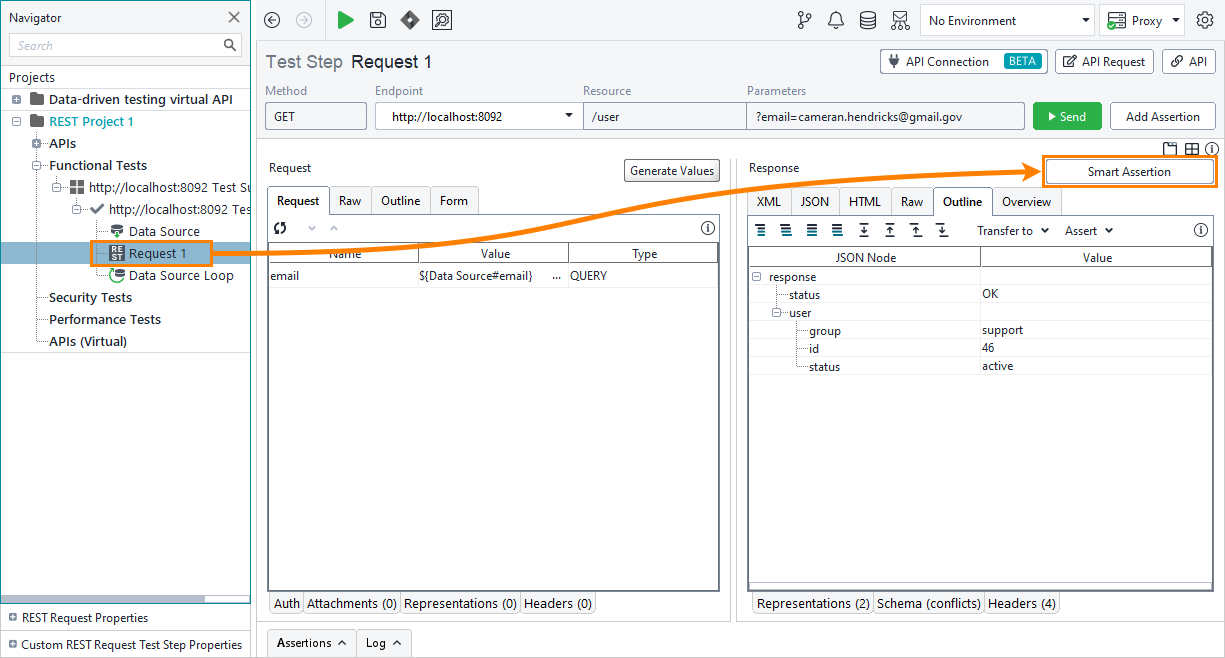
ReadyAPI will create an assertion based on the most recent response and automatically configure which values are expected for which data fields:
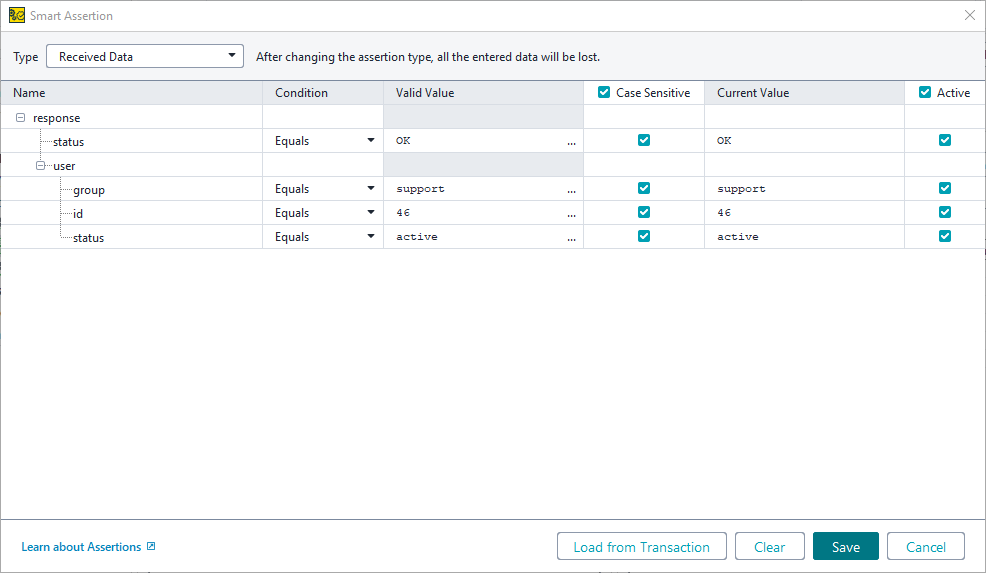
You can uncheck boxes to exclude certain fields from the assertion or configure comparison operators and expected values. When you are done, click Save:
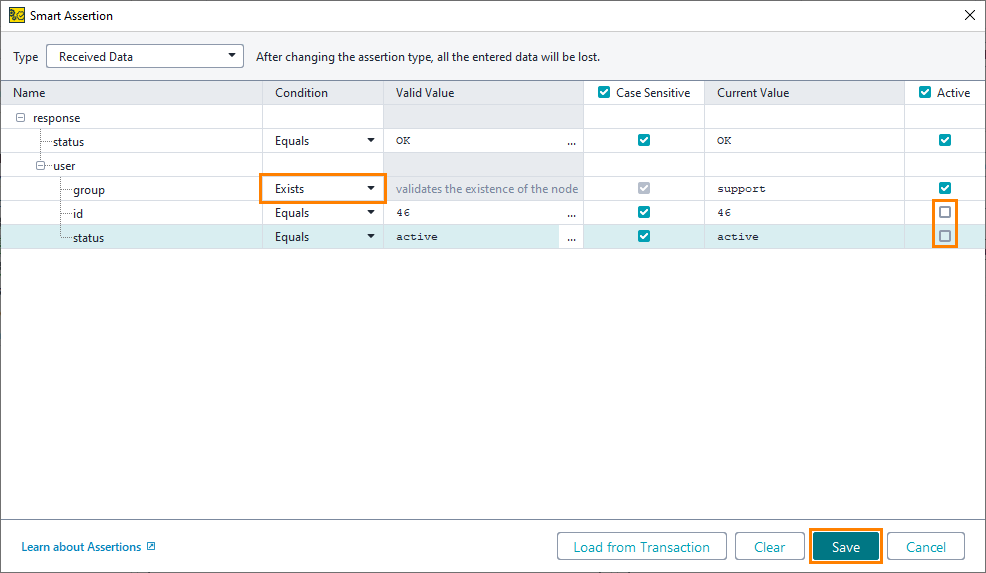
You have added the Smart Assertion to your test request. It will verify that the response data matches the expected values. You can find the added assertion in the Assertions panel:
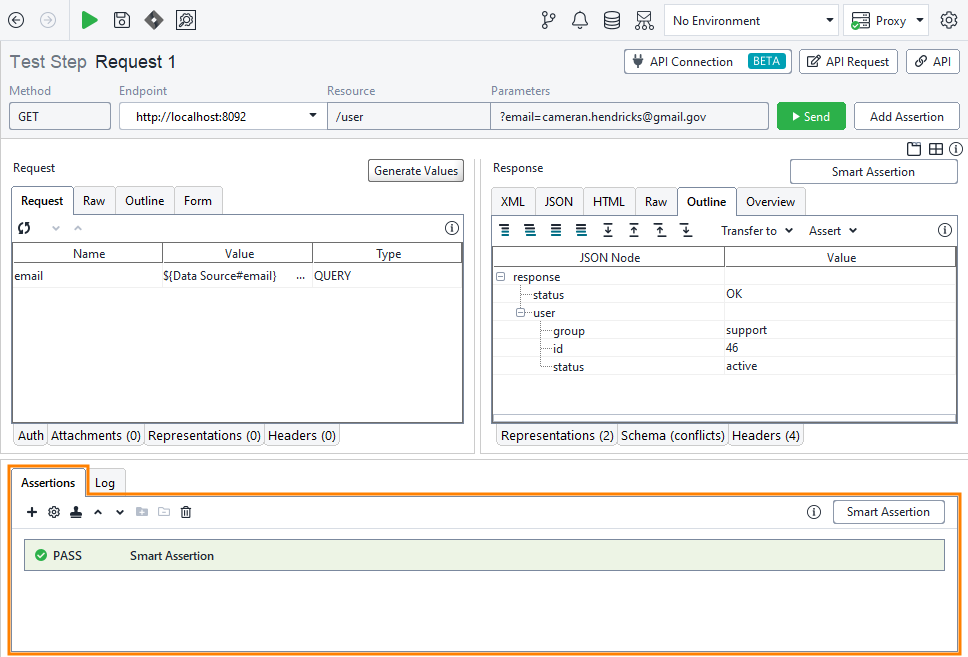 |
